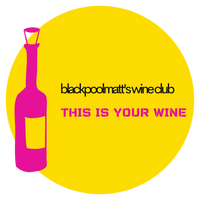The Loire Valley
I just can’t help constantly thinking and writing about the Loire Valley. That’s partly because I’ve been tasting so many fantastic wines recently, both classic and esoteric. It’s also because there are so many styles of wine made there: I’ve already posted about Sauvignon Blanc and rosé, but there’s also Chenin Blanc, sweet wine, sparkling wine, Pinot Noir, Gamay, and Malbec, not forgetting the high-acid wines of Muscadet. There’s no doubt the Loire would supply a lifetime’s supply of wine for my desert island.
The first time I stayed in the Loire Valley was in 1986, on a family holiday. It was love at first sight: the beauty, the openness, the rivers, the famous châteaux, and the sunshine. The Loire Valley has a cool climate in wine terms, but it’s where France turns from having a rather English climate to one in which grapes can ripen—it’s called Le Jardin de France for a reason.
If the Loire Valley is the first French region I remember visiting, then it’s also the last I went to before COVID meltdown. After staying in Bordeaux, I stopped off in Orléans and bar-hopped tasting local wines. Orléans is an awesome city, with Parisian commuters and students filling the streets. As with cities such as Nantes, Angers, and Tours, the wine scene is vibrant, reflecting the edgy winemaking of the diverse sub-regions of the Loire Valley.
the opportunities of vin de france
There’s an excellent wine bar in Orléans called Les Becs à Vin that focuses on natural wine. They feature wines from the Loire which are often instead labelled Vin de France—a category which is allowing producers to experiment beyond the classic appellations of the wide-ranging region.
One winery that takes advantage of Vin de France is Domaine de l’Austral, based in Saumur. “Octopus” is a light-bodied summer red made from Cabernet Franc and Grolleau, a blend not allowed under Saumur’s regulations. Meanwhile, “Jolie Brise” is a sparkling rosé made from Chenin Blanc and Cabernet Franc. To be labeled as a Saumur sparkling rosé, the wine must be at least 60% Cabernet Franc; this is only 50%. Rules are for sticklers; Vin de France is for those who want to do their own thing.
Meanwhile, Louis Metaireau makes sparkling wine in Muscadet, where the appellations do not include bubbles. They should, because, as this wine shows, the neutral aromas and naturally high acidity of the local grape Melon make it perfect for sparkling wine.
Another Vin de France from the Loire is “Tsoin Tsoin” (pronounced swan-swan), a fun, light, quaffable red made from Cabernet Franc and Gamay by former computer engineer Laurent Herlin. The wines of the Loire and summer drinking are a natural fit.

and the classics…
Of course, there are the more classic appellations too, also featured in blackpoolmatt’s wine club. Check out the wines from Château d’Epiré from Savennières, an appellation which produces powerful but acidic wines exclusively from Chenin Blanc. Or the sparkling wine, also from Chenin Blanc, from Xavier Weisskopf, who is helping to draw attention to Montlouis, an historic appellation overshadowed by neighboring Vouvray. Or the Cabernet Franc from Domaine de la Bergerie, who have a Michelin-starred restaurant on site. I know where I’ll be visiting when I next go to the Loire…
